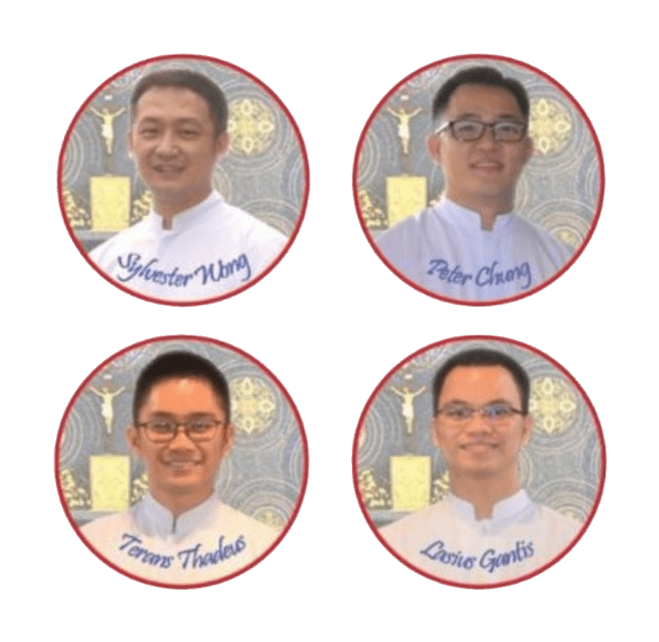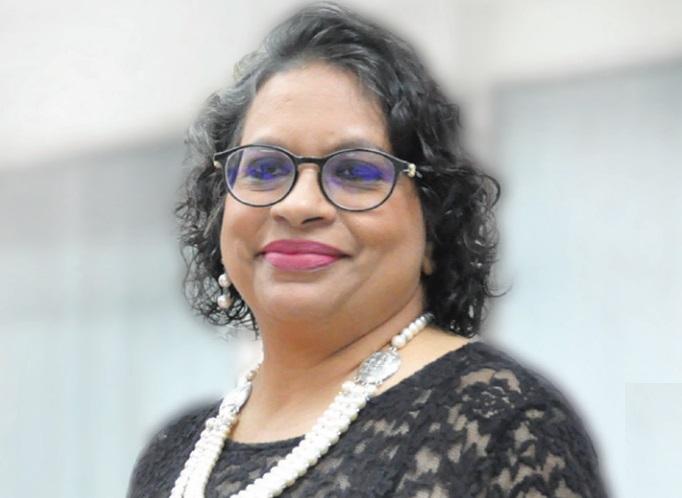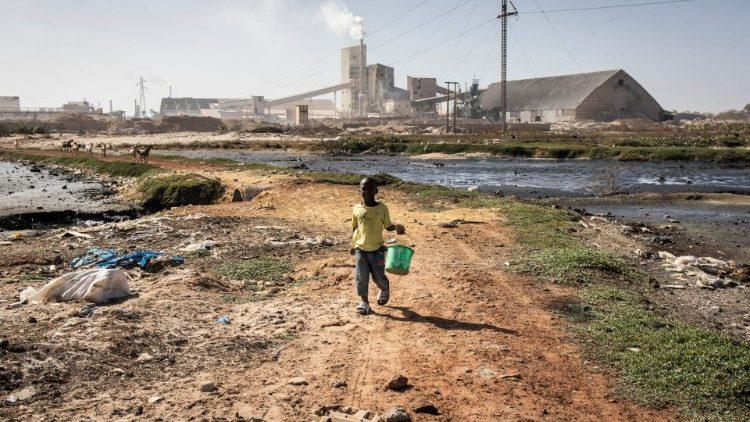Vatican 2 documents meant for the heart as well as the head – Final Part
 It was often the Popes who helped lead the renewal: Pius X introduced the idea of frequent communion, at a time when most Catholics were overly concerned with the idea of sin and so only went to communion once a year. Then, Pius XII restored the Easter Triduum – the Vigil, for instance, had been performed early on Holy Saturday morning and very few people took part. The vernacular also began to make itself felt and the practice grew up of reading the Scriptures at Mass in the local language – after they had been officially read in Latin during the Mass. Lay apostolates also began to appear, such as the Young Christian workers and the Legion of Mary etc. – showing new ways of “being Church”. Also, the 19th cent had also seen an upsurge of missionary movements, Mill Hill being one, and with this came the importance of the lay catechist. All this and more had begun to show the inadequacy of the Tridentine Church discipline and customs, when faced with the cultures of Asia, Africa and South America. New answers were needed to the questions thrown up by these and many other happenings – and the Council fathers set out to address them.
It was often the Popes who helped lead the renewal: Pius X introduced the idea of frequent communion, at a time when most Catholics were overly concerned with the idea of sin and so only went to communion once a year. Then, Pius XII restored the Easter Triduum – the Vigil, for instance, had been performed early on Holy Saturday morning and very few people took part. The vernacular also began to make itself felt and the practice grew up of reading the Scriptures at Mass in the local language – after they had been officially read in Latin during the Mass. Lay apostolates also began to appear, such as the Young Christian workers and the Legion of Mary etc. – showing new ways of “being Church”. Also, the 19th cent had also seen an upsurge of missionary movements, Mill Hill being one, and with this came the importance of the lay catechist. All this and more had begun to show the inadequacy of the Tridentine Church discipline and customs, when faced with the cultures of Asia, Africa and South America. New answers were needed to the questions thrown up by these and many other happenings – and the Council fathers set out to address them.
Then, came John 23rd…
It is difficult to describe the effect John XXIII had on the Church and indeed the whole world. It was similar, in some ways, to the effect Pope Francis is having now – but it was a far more dramatic contrast with the past – and like present times, not all Catholics welcomed the change, some preferring the security of fixed ways of thought and fixed rules of action. They were used to severe, distant, rather aristocratic popes and, suddenly, here was this old man, the son of a farmer, who behaved more like a loving grandfather than the Universal Pontiff. He showed the world what a Pope could be – someone who, in his person, revealed the loving care of God the Father of all. Historians tell us that he was elected as a stop-gap pope, to fill in until Cardinal Montini, the future Pope Paul VI, had gained a few years pastoral experience as Bishop of Milan. However, the Holy Spirit seemed to have other ideas and he was the one who, to the surprise of all, was elected Pope and then called the Second Vatican Council.
After the First Vatican Council in the 1870s – when papal infallibility had been defined – people had come to think that there would be no more Councils – it was thought that there was no more need, for the Pope was infallible. What had been forgotten was that the work of Vatican 1 had been interrupted, when the forces of Garibaldi arrived at the gates of Rome demanding entrance. The first Vatican Council had declared the dogma of the infallibility of the Pope, but this was supposed to have been followed by the decree on the Church, teaching the place of the bishops in the magisterium – but this never happened, for together with the arrival of Garibaldi, the Franco-Prussian War also broke out and so Vatican 1 was adjourned with its business unfinished. The result of all this was that the idea of how authority in the Church worked, became even more lop-sided, for the place of the bishops, and indeed the priests and laity, had been overlooked!
The sign of the times
On the surface, the 1950s and 60s were a triumphalist time for the Church – there were Catholic Statesmen everywhere – Kennedy was the President of USA and Konrad Adenauer was the Chancellor of Germany. Convents and seminaries were full, but John 23rd, and many others, obviously felt that this external success was profoundly at odds with the inner life of the Church, for:
• Ecclesiastical studies were sterile – they comprised the learning of fixed texts
• The liturgy was lifeless – even though extra-liturgical devotion was thriving
• Moral instruction consisted of laws – there was no invitation
• The driving force of the spiritual life was fear, fear of hell, and hope was hidden
• The clergy were divided from the laity
• Christendom was scandalously divided
• Scripture was all but forgotten
– And, as has been said, Jesus was on the margin of piety.
The outward life of the Church did not have the soul, the inspiration, the vision necessary to sustain it – a crash was inevitable, but, by God’s grace, by the time it happened, Vatican 2 had happened and had pointed the way forward.
Historical circumstances in the world, at that time, also had a profound effect on the Council. In 1962, the Cuban Missile crisis happened and the world came to the brink of the 3rd World War – a war no one would have survived. The USA delivered an ultimatum to Russia that unless they removed their nuclear missiles from Cuba, which were pointing at US, it would destroy them – the deadline was just hours away when Russia ordered its ships, which were carrying nuclear warheads to Cuba, to turn back. I remember the tenseness of the time. Had Russia not turned back there would have been nuclear war – and no one would have survived.
This, and other happenings, made it blatantly obvious that the Church could no longer be just a Fortress Church to defend its own people. Either it turned its immense influence to defend all peoples and all religions in the world, or there would be no world, no people and no Church left to defend. When, towards the end of the Council, in 1965, it came to speak out against war, in Gaudium et Spes, Pope Paul 6th travelled to the United Nations in New York and appealed: “No more war! War never again! It is peace which must guide the destiny of all peoples of the world and all humanity”. Thus the near catastrophe of the missile crisis led Vatican 2 to turn our once militant Church into a Peace Church.
Likewise, the tragedy of the Holocaust in the 2nd World War was still very much in the minds of people and John 23rd knew of the Holocaust at first hand. As Papal Nuncio, he had forged baptismal certificates to enable Jews to escape from the Nazis and after the War, when he was appointed as Nuncio to Paris, he saw, at first hand, that Church-men in France had been complicit in the extermination of the Jews – and recognised that Church catechesis, which condemned all outside the Church, had played a part in this with its disparaging of the Jewish People. John insisted that the Council face up to the anti-Semitism in the Church and in the World at large. In Nostra Aetate, the decree on non-Christian religions, it affirmed that the Jewish Covenant was still valid and that all other religions are deserving of respect and honour.
Thus, when John 23rd opened the Council with the words “Mother Church rejoices” he launched a renewal movement… the famous ‘aggiornamento’. The whole defensive attitude, which had marked the Church from the time of Trent, began to change and the Fortress Church opened its gates in friendship to others. Together with this, Pope John approached the other Christian Churches and confessions inviting them to the Council and thus offering a vision of the Church which embraced them and all peoples in the world.
How does a Council work?
The way in which we speak about the Magisterium or teaching office of the Church, often gives the impression that the Pope and Bishops have a direct line to the Holy Spirit, who tells them what to say, and then they pass this on to the rest of us, who listen and accept. The reality, however, is very different. The opening chapters of Genesis tell how God created the world out of chaos at the beginning of time and history teaches us that new eras of Church life and new visions of mission are usually born out of disagreements, debates and even acrimony. The documents of the Second Vatican Council are no different – for as the Council teaches, Spirit speaks through the whole Church – not just through one person or one group.
It is of our Faith that the Magisterium have been given the office of being the teachers in the Church – a necessary office if we are to survive as one Church, for we need those whose job it is to state what our faith is. However, although the pope and bishops have this task, they do not have a direct line to the Holy Spirit – they have to struggle through prayer, discussion and study to discover what the Holy Spirit is saying to the Churches, because the Spirit speaks through the whole Church and all have a part to play in this. This is particularly true of a General Council. In the past, people usually heard only of the final documents produced by the Council – they did not hear of the arguments and debates, which took place in order to produce those documents. However, at Vatican 2, the media made sure that people did know what was happening and we saw that there were several factions all struggling to find the voice of the Spirit. This should not scandalize us; rather it should give us encouragement in our own lives, for as Pope Francis has said – Truth is absolute, but those who seek the truth are not. Each can only grasp a part, but through all our parts the Spirit speaks.
The Council begins
When Pope John announced that a Council would take place, the preparation work began. The Curia, which is like the Pope’s civil service, began to produce the preliminary documents for the Council. These documents would be given to the Council Fathers, when they assembled, and they would read them, talk about them and propose certain changes, which would then be voted on. Finally, they would be issued as Council documents. That was the theory, anyway, but it did not quite work out like that.
The Curia, the Pope’s civil service, was led by Cardinal Ottaviani, the Head of the Holy Office, a very influential man, but a man of the “Fortress Church” mentality. He saw that a certain way of believing and acting had served the Church for centuries and wanted it continued. Thus, together with producing the draft documents, according to their own views and ideas, the Curia also provided lists of like-minded men they thought should be on the commissions that would work on these drafts. Things were moving in their direction. But then the explosion happened!
The Council Fathers, for the most part, were ordinary simple pastoral men – and, because of the immense prestige of the Curia, it was thought that they would more or less agree with what the Curia proposed. However, they came to the Council with the many real problems facing their dioceses and many also brought with them their periti or experts, who were good theologians and scholars; the Bishops came to rely heavily on the opinions of these men – as well as on their own common sense – and it has been said that they arrived at the Council as pastors and they left as theologians, for it soon became obvious that they, the Council Fathers, were not going to be rubber stamps and just accept the documents presented to them by the Curia. To the surprise of many, the Fathers began, on the first day, by demanding a four day postponement so that they could consider who should be members of these commissions and, as a result, many of the suggestions of the Curia were rejected. Then, of the five of the draft documents presented to the Fathers by the Curia, four were rejected even as a basis for discussion and sent back to be completely re-drafted, but this time by members proposed by the Council Fathers. The Spirit of God began blowing through the Council chambers – and Pope John 23rd was heard to murmur – “Now my Council begins!”




This Post Has 0 Comments